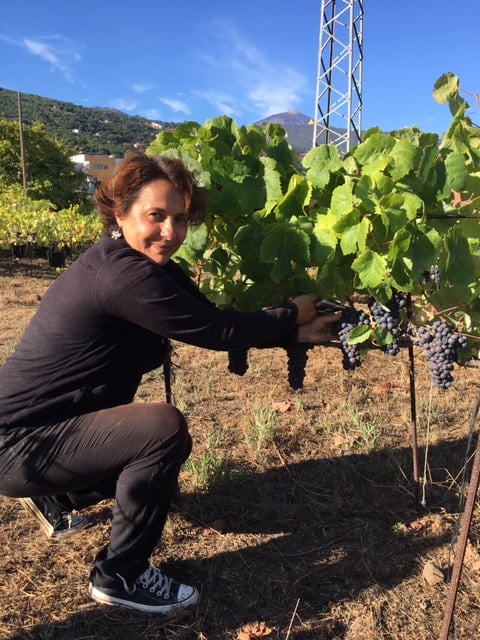Dolores Cabrera
The appeal of the dramatic cliffs, ancient chapels, and old vineyards of Cornudella de Montsant is easy to understand. The town and its environs, situated in the northwest of the Montsant appellation, rest at the feet two mountain ranges: the Serra de Montsant and the Muntanyes de Prades, providing radical shifts in elevation, complex slate and calcareous geological patterns, and imposing, picturesque cliffs Here, Agustí Torelló Roca founded Companyia Vitícola Sileo. Viticulture has a long history here, and the ancient landscape’s connection to the grape vine probably dates to the Romans and was certainly systematized by the Catholic church. Indeed, Montsant (“the holy mountains”) owes its name to the long history of hermetic monks that have dwelt in these hills, attested by the numerous surviving chapels. In the history of the region’s wine, however, the Carthusian monks are the center of the story.
Sileo is a Latin word meaning to be still, to be quiet, or to rest (it is the source of the English word ‘silence’). It is an important word for the Carthusians, a hermetic order of monks founded in 1084 devoted to silence and contemplation (the order’s motherhouse, the Grand Chartreuse in Alpine France, where the liquor Chartreuse is produced in perpetual silence, is perhaps the best-known contemporary expression of the order). The Monasterio Escaladei was the first Carthusian monastery in the Iberian Peninsula, established near Cornudella by Alfons the Chaste, king of Aragon, in 1194. Donations from successive monarchs provided the monks with much of the surrounding land, which they largely dedicated to viticulture. Their dedication to mapping, planting, and cultivating vineyards laid the groundwork for two important modern appellations (Montsant and Priorat), and although the Priorat de Scala Dei was dissolved in 1835, its cellars continue to be used for the aging of wines. In a very real sense, the winegrowers and winemakers of Priorat and Montsant owe much of their livelihood to these silent fathers who discovered and refined the viticultural potential of this place.
Montsant has long existed in Priorat’s shadow. The mountains of the Montsant DO encircle the valleys of the Siurana and Montsant rivers that form the heart of the DOQ of Priorat. While the Priorat DO was established in 1954, the region’s meteoric rise to the forefront of Spanish wine in the 1990s transformed the area as independent producers replaced the old cooperatives and garnished national and international praise. Simultaneously, these producers developed a style of powerful and intense red wines that remain the region’s hallmark. The development of viticulture in Montsant, previously very much in line with Priorat, diverged in the 1990s as the smaller region received international praise; Montsant only received DO status in 2002 and growth truly began in the 2000s. Despite this later arrival on the international scene, the varieties of soils, exposures, and wine styles offered by the Montsant region have been increasingly interesting for winemakers based in Priorat, in Catalunya, and in the rest of Spain.
The area around Cornudella de Montsant, where Companyia Vitícola Sileo is based, is among the highest in elevation and the most varied in soil types in Montsant. Here, at the meeting point of the Prades and Montsant mountains, one finds old vines on steep slopes of calcareous clay and racorell slate. These nutrient-poor and well-drained soils have been recognized as exemplary places for the planting of vines for hundreds of years and the Carthusians and others planted the mountains with Grenache and Carignan.
Agustí Torelló Roca was drawn to Cornudella and to Montsant, partially, as a place to make red wine. His and his family’s other projects (AT Roca and Anima Mundi) are focused on sparkling wines and still white wines, and Companyia Vitícola Sileo represents an expansion of that focus. Around Cornudella, Agustí found healthy vineyards planted to varied soils, with differing exposures and altitudes that could express the different aspects of Montsant. But, certainly, the meaning of Sileo and the promise of the vineyards around Cornudella is more expansive than just a place to make a different style of wine. The Roca family has worked to cultivate a deep connection to the region, its vineyards, its history, and its viticultural heritage.
If Sileo references the Carthusian heritage of the region, it also expresses an aspect of Agustí’s approach to winemaking. The wines are allowed to ferment slowly, and rest in the cellar without additives or alterations. The vineyards are worked gently, and according to organic principles, so that they can express themselves without interruption.
